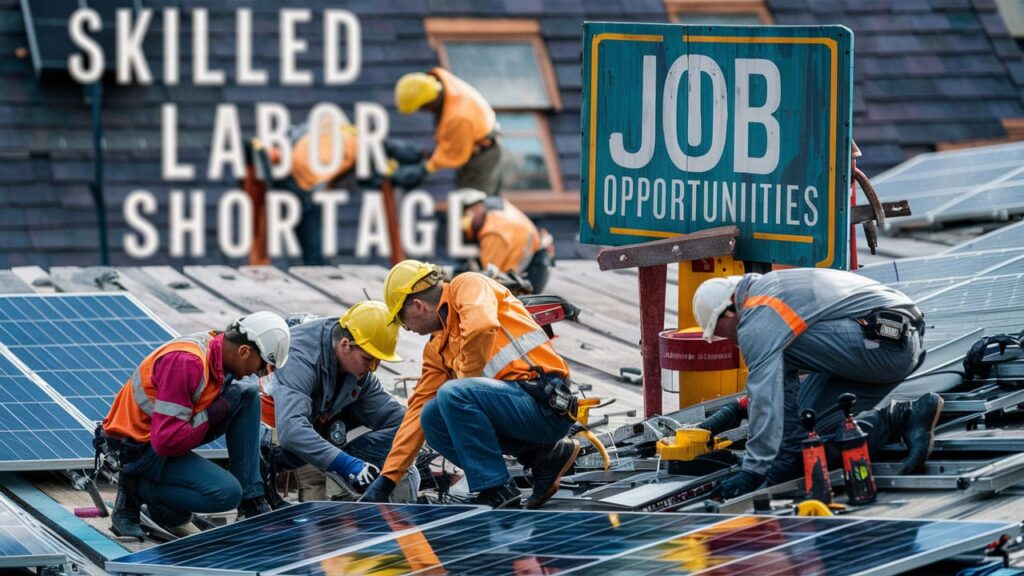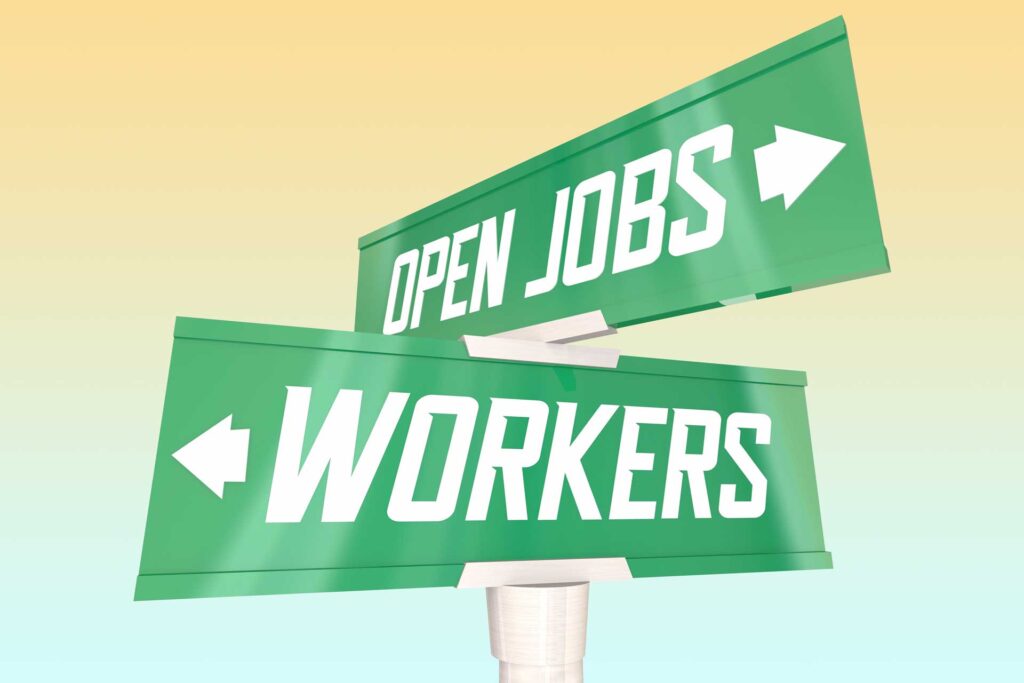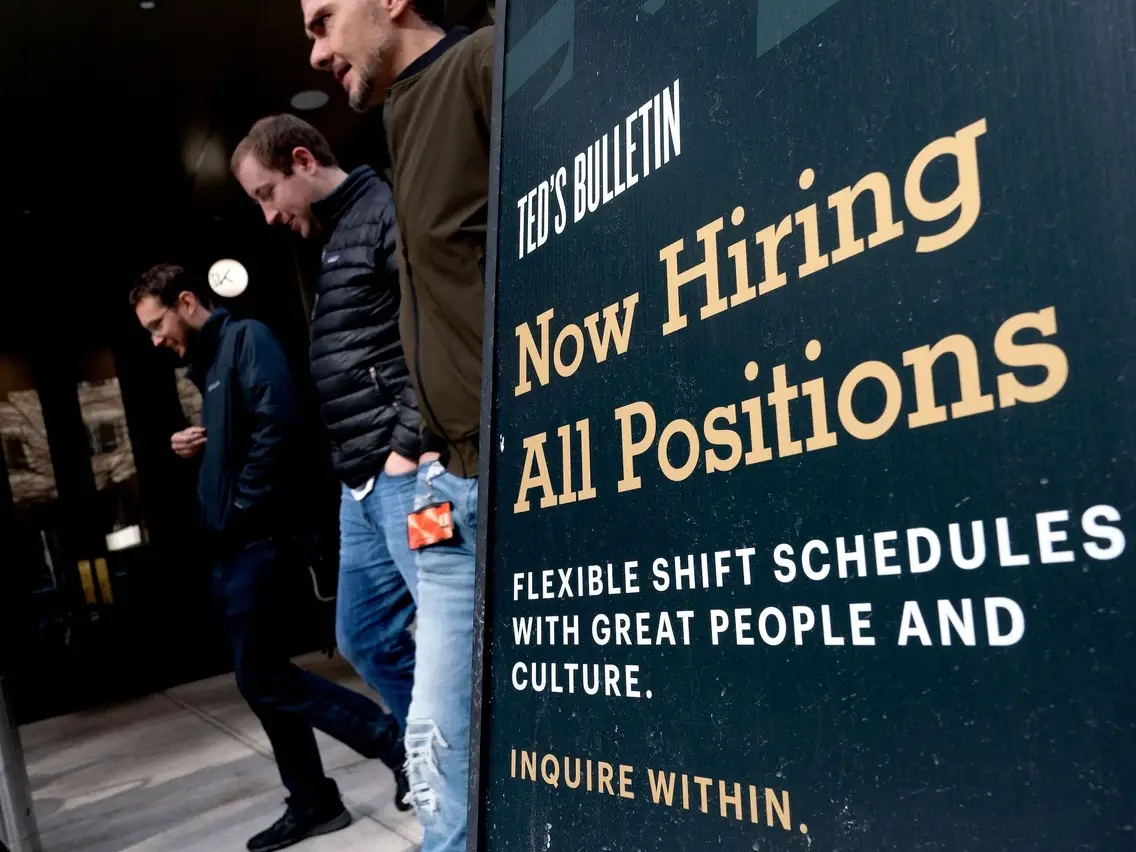The American labor market presents a curious paradox. The U.S. Chamber of Commerce reports a staggering 8.5 million job openings, far exceeding the 6.5 million unemployed individuals. This phenomenon, dubbed the “Great Disconnect” by some, reflects a complex interplay of factors causing workforce shortages across various industries.
The Post-Pandemic Reshuffle: A Mass Reassessment of Work
The COVID-19 pandemic significantly disrupted the labor landscape and how Americans view work. The “Great Resignation” saw millions reevaluating their careers, with many leaving low-wage jobs in search of better pay, benefits, and work-life balance. This trend continues, with over 30 million workers resigning in 2023 alone. This mass reassessment of priorities is fueled by a confluence of factors:
- Burnout and Redefined Values: Many workers, particularly in frontline service and healthcare jobs, faced unprecedented stress and long hours during the pandemic. This led to burnout and a reevaluation of what mattered most. A study by Pew Research found that work-life balance and feeling valued by employers became top priorities for many.
- Remote Work Revolution: Lockdowns forced a large-scale experiment in remote work. Many employees discovered they could be just as productive, if not more, outside the traditional office setting. This newfound flexibility became a dealbreaker for some, unwilling to return to rigid commutes and inflexible schedules.
- Wage Stagnation vs. Rising Costs: Years of stagnant wages, coupled with rising costs of living, left many workers feeling undervalued. The pandemic exposed the precarious financial situations of many low-wage earners, prompting them to seek opportunities with better compensation and benefits.

The examples are endless. We have all heard the stories about medical and hospital staff who spent years putting their health at risk during the pandemic left the bedside to pursue less stressful careers both outside of the medical arena, and within at Telehealth companies. Employees, empowered by a hot job market, negotiated raises and better working conditions at competitors. Even, young professionals, realizing the value of remote work, prioritized companies that offer flexible schedules, allowing them to pursue hobbies and spend more time with family. Consequently, the post-pandemic reshuffle wasn’t just about quitting bad jobs; it was about seeking better ones. This shift in worker priorities continues to challenge businesses to adapt and offer more competitive compensation,flexibility, and a sense of purpose to attract and retain talent.
Beyond Resignation: A Multifaceted Job Openings Puzzle
While worker discontent plays a role, the reasons are more nuanced. The labor shortage puzzle within this available job opening paradox has several interlocking pieces:
- Demographic Shifts: The U.S. population is aging, with the Baby Boomer generation exiting the workforce in droves. This trend is expected to continue, creating a smaller pool of potential workers.
- Early Retirements: The pandemic prompted many to re-evaluate their retirement plans. Health concerns, childcare disruptions, and a desire for a more relaxed lifestyle led to a surge in early retirements, particularly among those with financial security.
- Childcare Disruptions: The pandemic’s impact on childcare facilities forced many parents, particularly mothers, to leave the workforce or reduce their hours. The lack of affordable and reliable childcare options continues to be a major hurdle for many seeking to re-enter the workforce.
- Immigration Slowdown: Net immigration to the U.S. has fallen to its lowest level in decades, further reducing the pool of potential workers. This is due to a combination of stricter immigration policies and global economic factors.
These factors combine to create a complex situation. For example, an aging population might lead to a shortage of nurses, but if a lack of affordable childcare options prevents potential nurses from entering the workforce, the job openings problem becomes compounded. If a day care center closes due to staffing shortages amidst its own job openings, then even more parents and potential workers are unable to enter the workforce. When young people move to cities for educational and career opportunities, a manufacturing plant in a rural area my struggle to find qualified workers. Each job opening has the potential to aggravate the worker shortage problem.
Thus, addressing the labor shortage requires a multifaceted approach that tackles these various challenges simultaneously. This may involve policies that encourage immigration, investments in childcare infrastructure,and educational programs focused on developing in-demand skills.
Industry Imbalance: The Labor Shortage and Ample Job Openings Paradox

The job openings / labor shortage dilemma isn’t a one-size-fits-all problem. Certain sectors, like healthcare, transportation, and hospitality industries are particularly strained and feeling the pinch more acutely than others. This is due to a combination of factors that make them less attractive to potential hires leaving the position unfilled and adding to the surplus in job openings:
- Low Wages and Limited Benefits: Jobs in sectors like hospitality, retail, and food service have historically offered lower wages and fewer benefits compared to other industries. This makes them less attractive to potential hires, particularly in an environment where workers have more leverage to negotiate for better compensation. For example, a restaurant server position might pay minimum wage with limited paid time off, while a job in software development could offer a significantly higher salary, comprehensive benefits package, and opportunities for career advancement.
- High Stress and Physically Demanding Work: Many industries experiencing labor shortages also involve physically demanding or stressful work environments. Nurses, construction workers, and delivery drivers often face long hours, shift work, and the potential for injuries. These factors can lead to higher burnout rates and make it difficult to retain workers.
- Limited Upward Mobility: Some industries offer limited opportunities for career growth and advancement.This can be a major turnoff for ambitious workers seeking to develop their skills and take on more responsibility. For instance, a cashier at a grocery store might see few paths for advancement beyond becoming a manager, while a job in engineering could offer a clear career trajectory with increasing salaries and responsibilities.
The impact of these shortages is felt by consumers as well. Restaurant wait times may lengthen, deliveries may be delayed, and essential services may become more expensive as businesses struggle to fill open positions. Addressing these imbalances requires industry-specific solutions, such as higher wages, improved working conditions, and clearer pathways for advancement within these sectors.
The Long-Term Ripple Effect: A Cascade of Consequences
The labor shortage isn’t just a temporary inconvenience or employer only problem; it has the potential to create a cascade of negative consequences for the economy and society as a whole. Here’s a closer look at some of the long-term ripple effects:
- Higher Prices and Inflation: When businesses struggle to find workers, it can lead to decreased productivity and output. To maintain profits, businesses may be forced to raise prices on goods and services. This can contribute to inflation, eroding consumer purchasing power and potentially leading to a vicious cycle. For example, a restaurant with fewer cooks may have to limit its menu or raise menu prices to offset the cost of hiring additional staff.
- Strained Supply Chains and Service Disruptions: Labor shortages throughout the supply chain can lead to disruptions in the flow of goods and services. This can manifest in delays, cancellations, and limited product availability. For instance, a lack of truck drivers may cause delays in receiving shipments,impacting businesses and consumers alike. Hospitals with understaffed nursing units may struggle to provide timely care to patients.
- Erosion of Social Programs: Social programs like Social Security and Medicare rely on a healthy tax base generated by a robust workforce. A shrinking workforce could lead to a decline in tax revenue, putting these programs at risk in the long run. This could have a devastating impact on retirees and individuals who rely on these programs for healthcare and financial security.
Examples of Cascading Effects:
- A construction project is delayed due to a lack of skilled laborers, pushing back the completion date and potentially causing financial losses for the developer. This delay could also impact other businesses that were expecting to move into the completed building.
- A shortage of teachers in public schools could force larger class sizes and a decline in the quality of education. This could have long-term implications for the future workforce and economic growth.
- A lack of home healthcare workers could force some elderly individuals to move into nursing homes,increasing healthcare costs for both individuals and the government.
The long-term effects of the labor shortage highlight the interconnectedness of the economy and society.Finding solutions requires a collaborative effort from businesses, policymakers, and educational institutions.Investing in workforce development programs, promoting immigration reform, and making careers in essential industries more attractive are crucial steps to mitigate these long-term risks.
Navigating the Maze: A Multi-Pronged Approach to Filling Job Openings

Addressing the issue requires a multi-pronged approach. Investments in childcare and eldercare infrastructure can help ease burdens on those leaving the workforce. Additionally, policies promoting skills development and retraining programs can equip workers with in-demand skillsets. Businesses, too, must adapt by offering competitive wages, flexible work arrangements, and opportunities for advancement to attract and retain talent.
The labor shortage isn’t an insurmountable challenge, but addressing it requires a multi-pronged approach that tackles the root causes and creates a more sustainable talent pipeline. Here are some potential solutions:
- Investing in Workforce Development: Bridging the skills gap is crucial. Governments and businesses can collaborate to fund vocational training programs, apprenticeships, and educational initiatives focused on in-demand skills like cybersecurity, data analytics, and advanced manufacturing. These programs can equip individuals with the necessary skills to enter the workforce and fill critical job openings.
- Reskilling and Upskilling Existing Workers: Many workers already possess valuable experience but may lack specific skills required for higher-paying jobs. Businesses can invest in reskilling and upskilling programs for their existing workforce. This can involve online training modules, mentorship programs, or tuition reimbursement for relevant certifications.
- Promoting Immigration Reform: Skilled immigrants can play a vital role in filling labor shortages.Streamlining the immigration process and creating pathways for skilled foreign workers to contribute to the U.S. economy can help alleviate workforce shortages in certain industries like healthcare and technology.
- Creating a Culture of Work-Life Balance: The pandemic highlighted the importance of work-life balance for employees. Businesses can attract and retain talent by offering flexible work arrangements like remote work options, compressed workweeks, and generous paid time off policies. Additionally, childcare subsidies or on-site childcare facilities can help ease the burden on working parents.
- Making Work More Rewarding: Competitive wages and benefits are essential, but a sense of purpose and career growth opportunities are also crucial. Businesses can improve job satisfaction by fostering a positive work environment, offering opportunities for professional development, and recognizing employee contributions.
The current labor shortage is a complex challenge with no easy answers. However, by understanding the root causes and implementing strategic solutions, policymakers, businesses, and workers can collaborate to create a more sustainable and equitable labor market for the future.
Learn more about MCK News here. MCK News’ Editor In Chief been featured in Forbes, Fox Business, Authority Magazine, Modern Marketing Today, PR Pioneer, Market Daily, O’Dwyer PR, DKoding, Business Insider, and Consumer Affairs.




